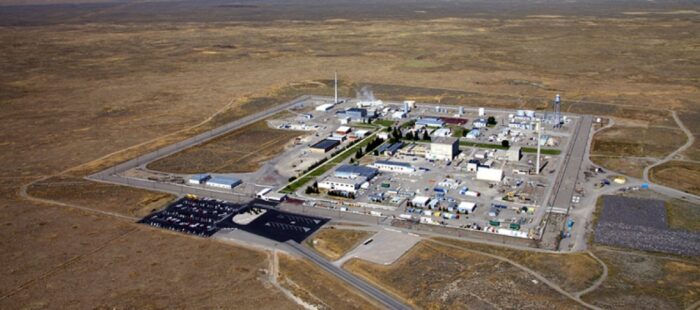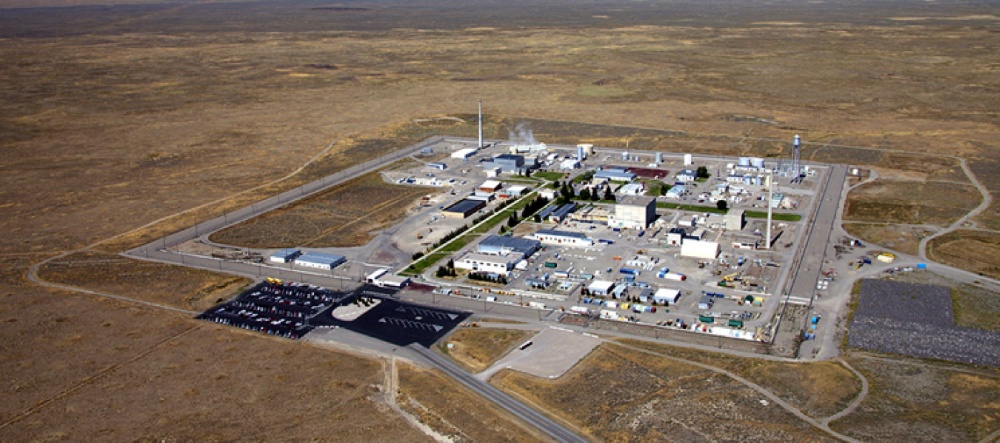April 7, 2025

The US Department of Energy is investigating the possibility of using Federal Land to tackle the growing demand for data centers to provide artificial intelligence – and the energy infrastructure that must be linked to it.
De DIJ has released an application for information (RFI) to inform the possible use of Land of Department possession for AI infrastructure development to support the growing demand for data centers. The Doe has identified 16 potential sites As well as suitable for fast data center construction, including in-place energy infrastructure with the possibility to make it possible for the new energy generation to be permitted. By bringing data centers and new energy infrastructure together in federal countries, the Doe wants to ensure that the United States is paramount in global AI development and at the same time reduce energy costs.
The 16 designed sites are:
- Idaho National Laboratory
- Paducah Gaseous Diffusion Plant
- Portsmouth Gaseous Diffusion Plant
- Argonne National Laboratory
- Brookhaven National Laboratory
- Fermi National Accelerator Laboratory
- National Energy Technology Laboratory
- National Laboratory for Renewable Energy
- Oak Ridge National Laboratory
- Pacific Northwest National Laboratory
- Princeton Plasma Physics Laboratory
- Los Alamos National Laboratory
- Sandia National Laboratories
- Savannah River site
- Pantex plant
- Kansas City National Security Campus
In accordance with the executive orders of the Trump government with regard to ‘Remove barriers for American leadership in artificial intelligence“And”Let’s American energy‘The DOG investigates opportunities to accelerate AI and energy infrastructure development throughout the country, prioritize public-private partnerships to promote the use of innovative technologies and strategies.
“With today’s action, the Ministry of Energy is taking important steps to use our domestic resources to provide the AI revolution with electricity, while he remains affordable, reliable and safe energy to the American people,” said Energy Chris Wright Secretary.
The department is looking for input from data center developers, energy developers and the broader public to further promote this partnership. The information collected will be used to inform the development, encourage private partnerships and to enable the construction of AI infrastructure on selected do locations with a target to start at the end of 2027.
The sites also offer industry the opportunity to work with Do’s World Class Research Facilities that held together on the sites, which means that the progress in both the Power Systems design needed to run the centers and develop the development of the next generation of data center hardware. Public information available about each site, including location, available area and other characteristics is provided in appendices to the RFI.
In addition, the RFI wants to collect information about potential developmental people, technological solutions, operational models and economic considerations related to the setting up of AI infrastructure.
The industry for solar and energy storage has been paramount in the development of facilities to provide electric data centers. Last October, the Do help with the opening of three solar projects In Texas (Orion I, Orion II and Orion III) together, 875 MW will produce electricity to help feed the Google data centers in the state.
With an increasing demand for data centers, solar energy can help relieve capacity shortages, according to Jeff Cramer, President and CEO, Coalition for Community Solar Access (CCSA).
“The demand is increasing due to population growth, data centers, AI and electrification. Grid operators such as PJM warn of capacity shortages and price peaks,” Cramer fored in a recent column for Solar builder. “Community Solar and other forms of distributed solar energy and storage are uniquely positioned to take on this challenge, because it can be used faster and closer to loading than large-scale projects. They also offer rare political sweet-die two-part support by providing lower energy weather, and the rooting of the roster.”
In the meantime, the National Electrical Manufacturers Association (NEMA) has established clear performance expectations for Battery Energy Storage Systems (Bess) to help data center developers and other end users to make informed decisions about which Bess products should be implemented to improve reliability and power development.
“An upcoming Nema study projects that will double the demand for electricity from the American data center in 2030 or even potentially triple,” said Patrick Hughes, Senior VP of Technical Affairs at NEMA. “If the United States want to lead the world in AI, we need tools such as energy storage that help create a reliable electricity supply to provide new data centers with electricity.”
Tags: artificial intelligence

